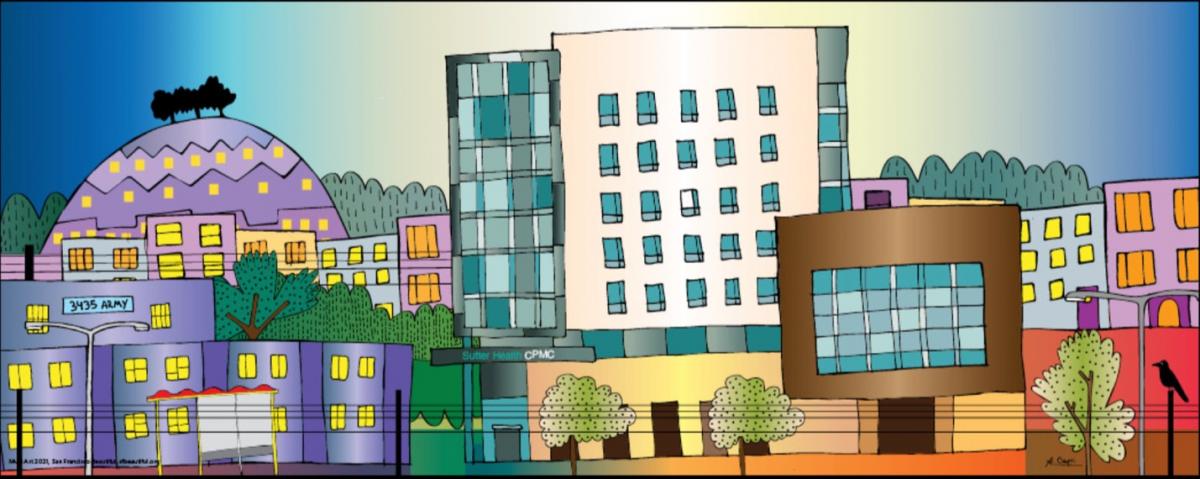By Jeanne Brophy
The SFMTA and San Francisco Beautiful announce the kick-off of the 2021 Muni Art Project. This year the program launch will be held virtually due to COVID-19 shelter-in-place orders.

Artwork by Agustina Caprioglio who found inspiration from COVID-19 and the frontline staff in hospitals, “They are our modern-day temples,” she states, “where people are born and die, where doctors and nurses work hard to take care of all”.
The 2021 theme, “San Francisco United” is the sixth year that the SFMTA, San Francisco Beautiful and The Poetry Society of America (sponsors of Poetry in Motion ®) have collaborated to bring art and poetry to Muni riders.
“Now more than ever—it’s important to appreciate and be thankful for the positives around us,” said Jeffrey Tumlin, SFMTA Director of Transportation. “That’s why we’re looking forward to bringing Muni Art back and sparking some joy in the wake of such a difficult year.”
Begun in 2015, Muni Art is the only public art project that exclusively features San Francisco artists and poets. The artists’ original work and five poems selected by the Poetry Society of America, is presented on 100 Muni buses throughout San Francisco from January through April, 2021.
Art is the one language that unites everyone," said Darcy Brown, Executive Director of San Francisco Beautiful. "We all have lost so much, Muni Art 2021 is one project we didn't lose. We celebrate our local artists and poets and San Francisco.
The 2021 Muni artists are:
- Kundan Baidwan
- Agustina Caprioglio
- John Keating
- Deirdre Weinberg
- Wes Wellner
The 2021 Muni poets and poems are:
- Kim Addonizio
- Derrick Austin
- Jennifer Elise Foerster
- Thom Gunn
- Gary Soto
In addition to the poet panels, each artist also has three panels to freely use reflecting the theme for a total of eight original works that will line both interior display sides of the buses and conform to the specifications of Muni display space. In addition, each artist will be awarded $1,000.
For more details on the winners of the Muni Art Project, please visit www.sfbeautiful.org/MuniArt. Examples of each artist’ work can be found at SFMTA.com/MuniArt.
Published January 19, 2021 at 11:26PM
https://ift.tt/2NjHwwR
Nhận xét
Đăng nhận xét